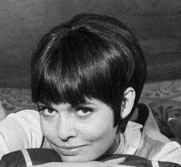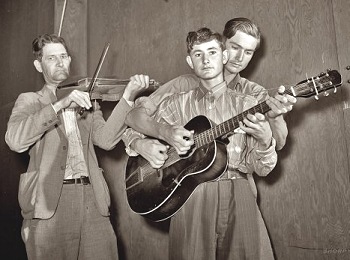I’m a bit late in reviewing this, but two Saturdays ago, February 23, the Lost Dog New Music ensemble performed at Judson Memorial Church at Washington Square in Manhattan. Lost Dog isn’t yet a very well-known group, but if this concert was any indication they may be on their way to indispensable. The group is the contemporary chamber music wing of the Astoria Music Society, which was founded in 2003 and which also includes a composers collective called Random Access Music, a jazz series called Astoria Jazz Nights, and the Astoria Symphony. (I saw the Symphony in an excellent performance of Mendelssohn’s Elijah last year.) Lost Dog has been around since 1995, but was rolled into AMS when the society was founded. Astoria, for those who dont know, is a neighborhood in Queens, New York, just over the Triborough Bridge from Manhattan, and on the N R and W subway lines. As artists got priced out of places like Downtown Manhattan, and DUMBO and Williamsburg in Brooklyn, many moved to Astoria, and in recent years has become one of the several rapidly gentrifying artsy communities in the Five Boroughs.
Saturday’s concert was, as I mentioned, not in Astoria but in Manhattan, and it was quite well attended for a contemporary music concert. The opening work was a piece by Lost Dog’s Artistic Director Garth Edwin Sunderland called Dark Heaven Angel. Composed for scordatura cello, tuned according to the harmonic series, the piece constructed a wide variety of sonorities out of different parts of the harmonic series. As in something like The Well Tuned Piano, much of the music seemed to exist in a contradictory world where the harmonies were simultaneously dissonant and harmonious, jarring and resonant. Part way through, car horns could be heard a few blocks away, and in almost any other circumstance they would have been an unwelcome intrusion, but somehow the timbre of the horns fit with the cello sounds, and actually enhanced my experience of the piece. Cellist Eric Jacobsen, it should be noted, is not a regular Lost Dog member, but he was spectacular in both this piece and as a featured performer in the next as well.
The featured work was Peter Maxwell Davies’s Vesalii Icones, a 14 movement work for chamber ensemble (flute, clarinet, piano, percussion, viola, and cello) and dancer. Davies drew his inspiration from a series of 16th century anatomical drawings by Andreas Wessels, or Vesalius in Latin. Vesalius used to perform human dissection during his lectures, and he was so celebrated that the government would time executions to coincide with them. The drawings themselves are, to modern sensibilities, quite bizarre—-rather than being clinical and impersonal, the dissected figures strike balletic poses, and are depicted with country landscapes in the background. Davies chose images and paired them with the Stations of the Cross, which the dancer interprets. It was an ambitious piece to write, and ambitious to perform. Unfortunately, I’m not much of a Peter Maxwell Davies fan, and I was not particularly impressed with the choreography, but, my own tastes notwithstanding, the piece is actually very good, and had some moments that even I found quite wonderful—-some of them funny and some beautiful. And I should say that other people seemed to like the choreography, so maybe I just don’t know what I’m talking about. What I do know, however, is that the performances—-both the dancing and the music-—were outstanding. Silas Huff, who also conducts the Astoria Symphony, lead the ensemble ably, and at one point cavorted with the cellist and with dancer Dora Arreola, reenacting the famous Abu Ghraib photos during the “The Mocking of Christ.”
In short, most people probably haven’t ever heard of Lost Dog before, but this talented group of musicians clearly has a lot to offer, and I’m looking forward to seeing what they do next.
 A long, long time ago, boys and girls, there was a very funny TV series called Get Smart, starring a Borscht Belt comic named Don Adams as a brain-addled superspy named Maxwell Smart and a cute-as-a-button gamine named Barbara Feldon as his trusty sidekick, Agent 99. This was before most of you were born.
A long, long time ago, boys and girls, there was a very funny TV series called Get Smart, starring a Borscht Belt comic named Don Adams as a brain-addled superspy named Maxwell Smart and a cute-as-a-button gamine named Barbara Feldon as his trusty sidekick, Agent 99. This was before most of you were born.
 II.
II. And you thought all those novel techniques came from post-1950s Euro-modernists?:
And you thought all those novel techniques came from post-1950s Euro-modernists?: New Yawkers could do worse at 8 p.m. on March 1st, than drop by
New Yawkers could do worse at 8 p.m. on March 1st, than drop by  The
The  Alex Ross has a splendid piece titled
Alex Ross has a splendid piece titled